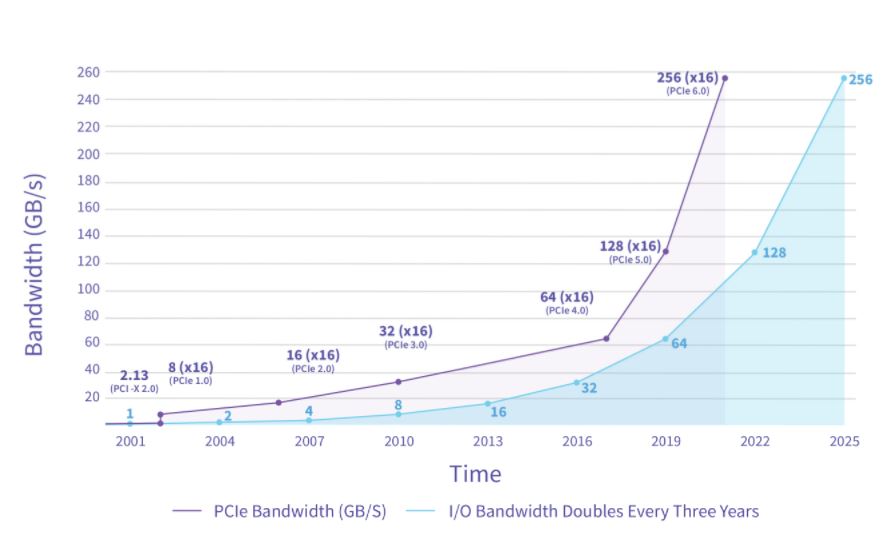- Joined
- Oct 24, 2013
- Messages
- 1,253
- Motherboard
- Asus ROG Z690 Formula
- CPU
- i9-13900K
- Graphics
- RX 6900 XT
- Mac
- Mobile Phone
yes catchup.Catch-up? They are getting ahead of the curve.
The PCIe 6.0 specification was out even before PCIe 5.0 devices were actually available. It's all driven by bandwidth demand for storage in the data centre. Consumers are totally irrelevant in this evolution, but which marketing department can resist pushing the new N+1 version of a specification to consumers which have absolutely no use for it?
Source: ServeTheHome
from the same chart:
Pcie 2.0 -> 3.0: 3 years.
Pcie 3.0 -> 4.0: 7 years!
Pcie 4.0 -> 5.0: 2 years.
Pcie 5.0 -> 6.0: ~3 years.
Historically, 7 years for moving from one pcie version to the next is an anomaly.
So the “catch up” is after the stagnation for 7 years in taking pcie from 3.0 to 4.0, pci-sig is advancing the ball much more rapidly than before, and in less time than it took to move from pcie 3.0 -> 4.0, we moved from 4.0 to 6.0, and now 7.0 is under development.
And for 6.0 they used a new signaling mechanism, PAM4. That’s good progress.
